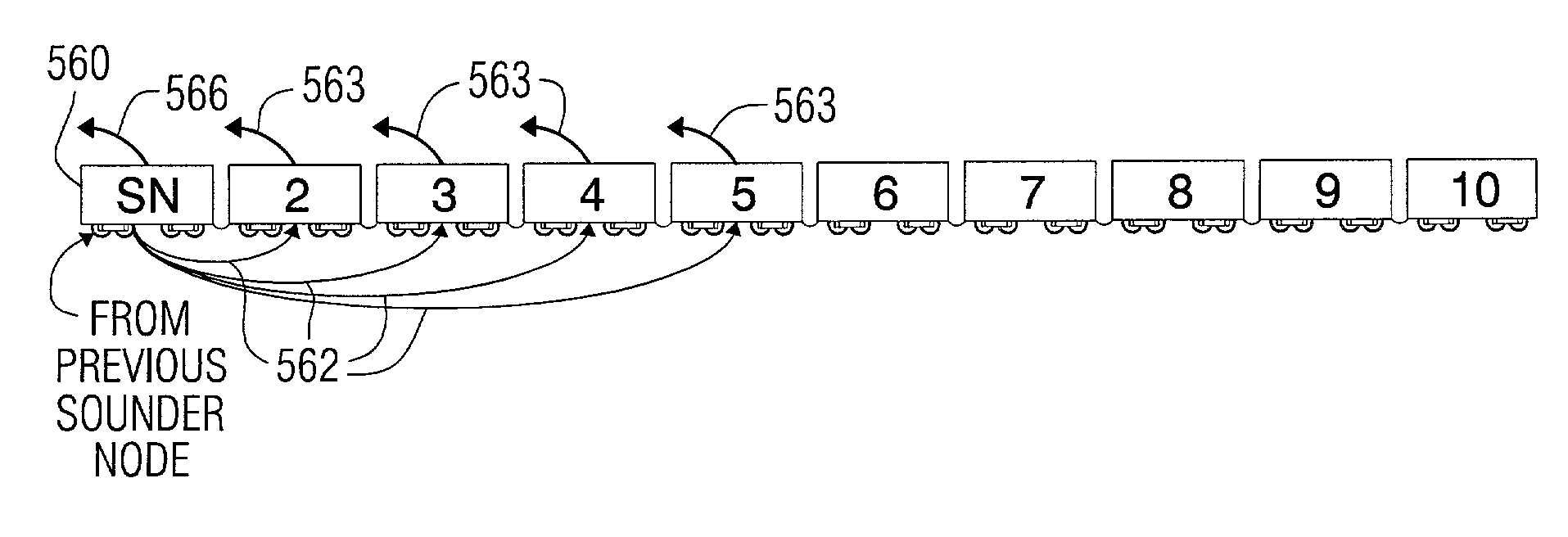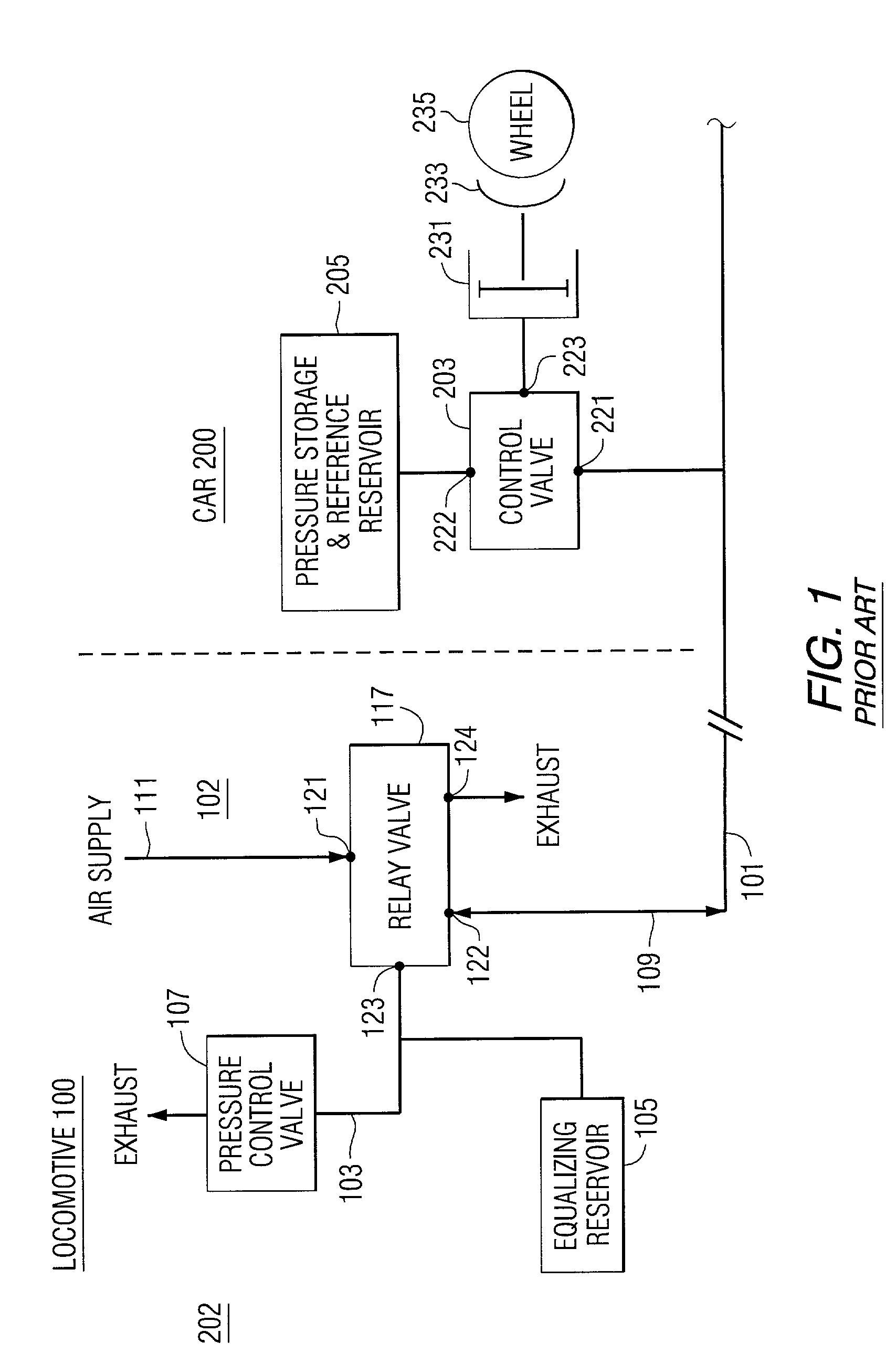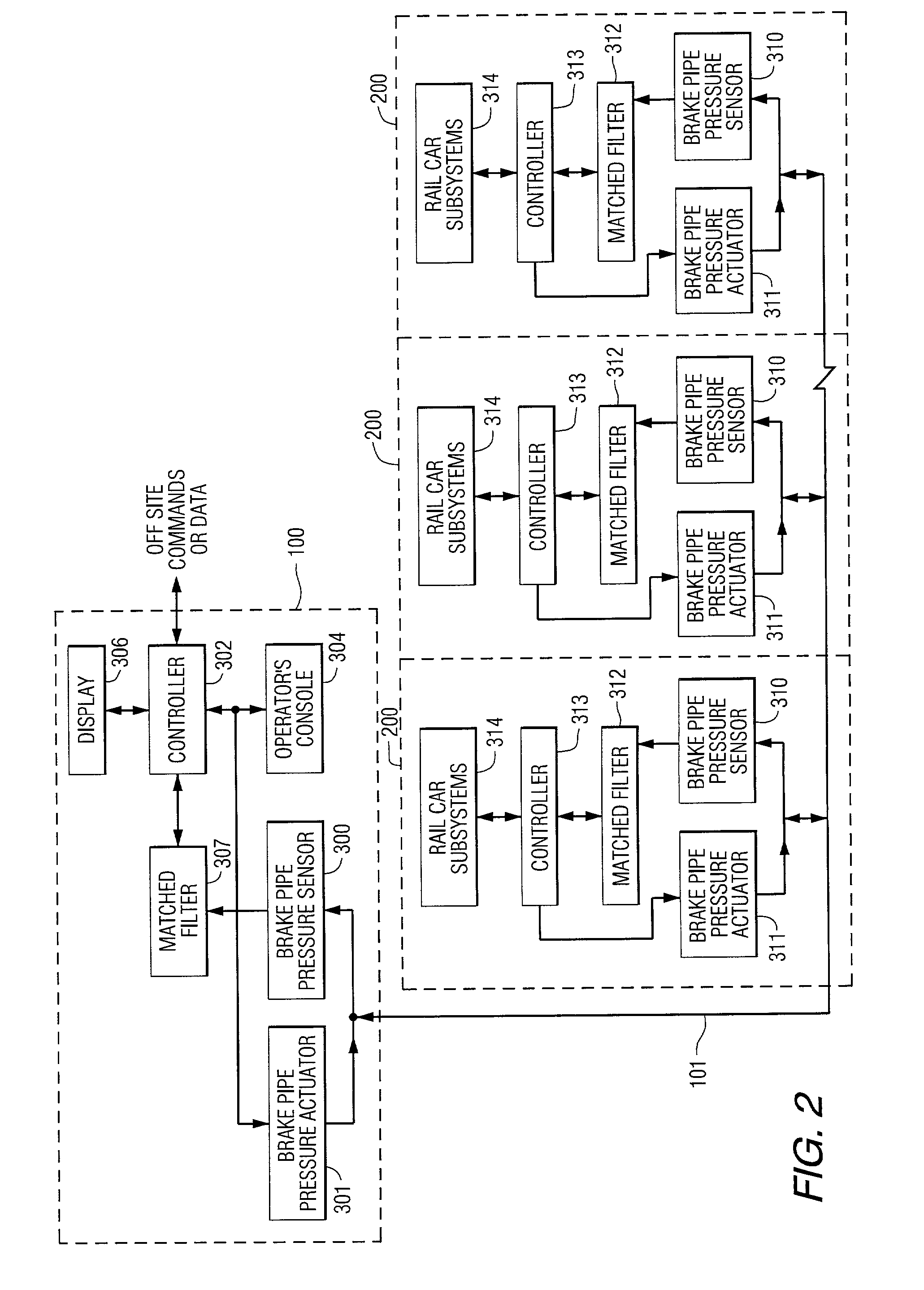Pneumatic-based communications system
a communication system and pneumatic technology, applied in the field of pneumatic-based communications systems, can solve the problems of limited pulse amplitude and width, and achieve the effects of improving train safety and handling, reducing the pressure of brake pipes, and improving control over the braking process
- Summary
- Abstract
- Description
- Claims
- Application Information
AI Technical Summary
Benefits of technology
Problems solved by technology
Method used
Image
Examples
Embodiment Construction
[0047]Before describing in detail the particular method and apparatus related to the application of pneumatic pulses on a brake pipe, it should be observed that the present invention resides primarily in a novel combination of processing steps and hardware elements related thereto. Accordingly, these processing steps and hardware components have been represented by conventional processes and elements in the drawings, showing only those specific details that are pertinent to the present invention, so as not to obscure the disclosure with structural details that will be readily apparent to those skilled in the art having the benefit of the description herein.
[0048]According to the teachings of the present invention, a set or group of pneumatic pressure pulses are transmitted from the locomotive or head-end unit (the node transmitting the pneumatic ping pattern is also referred to as the sounder or source node) representing a command or instruction for one or more railcars in the train...
PUM
 Login to View More
Login to View More Abstract
Description
Claims
Application Information
 Login to View More
Login to View More - R&D
- Intellectual Property
- Life Sciences
- Materials
- Tech Scout
- Unparalleled Data Quality
- Higher Quality Content
- 60% Fewer Hallucinations
Browse by: Latest US Patents, China's latest patents, Technical Efficacy Thesaurus, Application Domain, Technology Topic, Popular Technical Reports.
© 2025 PatSnap. All rights reserved.Legal|Privacy policy|Modern Slavery Act Transparency Statement|Sitemap|About US| Contact US: help@patsnap.com



